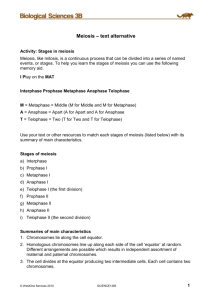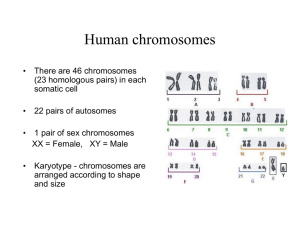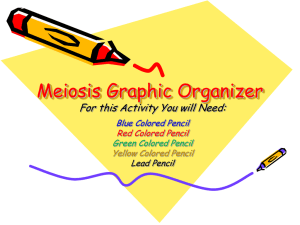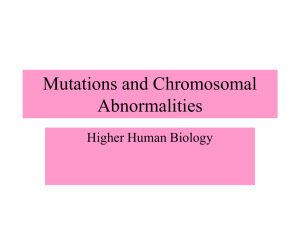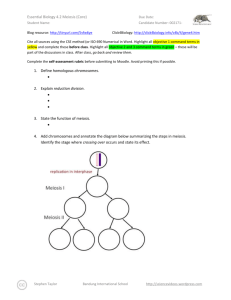Meiosis questions
advertisement
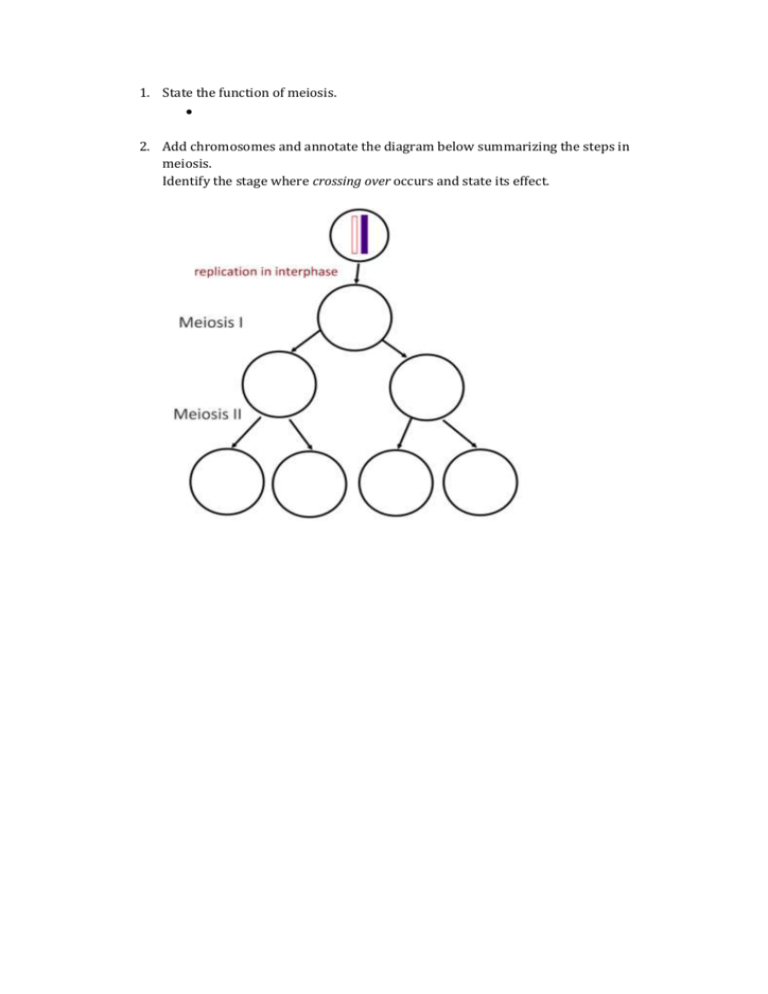
1. State the function of meiosis. 2. Add chromosomes and annotate the diagram below summarizing the steps in meiosis. Identify the stage where crossing over occurs and state its effect. 3. Compare mitosis and meiosis: Mitosis Meiosis Number of divisions Number of daughter cells Chromosome number in daughter cells Functions: 4. Outline the major events and movements of chromosomes occurring at these stages of meiosis: Meiosis I Meiosis II Interphase Interphase Prophase I Prophase II Metaphase I Metaphase II Anaphase I Anaphase II Telophase I Telophase II Cytokinesis Cytokinesis No replication occurs in interphase between Meiosis I and II. 5. Deduce the answers to these questions. a. A cell with a diploid number of 12 chromosomes meiosis. How many daughter cells will be produced and with how many chromosomes in each? Cells: Chromosomes: c. A diploid cell with 16 chromosomes undergoes meiosis. How many chromatids are present in metaphase I? Chromatids: 6. Describe what you can see in this image. 7. Distinguish between chromosomes, sister chromatids and bivalents. 8. State during which stage of meiosis is the image in Q8 most likely to be seen. 9. Outline how sexual reproduction leads to even further genetic variation within a species. 10. Annotate the diagram below to show what happens in non-disjunction in meiosis II. 11. Describe how non-disjunction and fertilisation lead to trisomy. Non-disjunction: Fertilisation: 12. Distinguish between non-disjunction and trisomy. Non-disjunction: Trisomy: 13. Compare the outcomes of non-disjunction in anaphase I with anaphase II: Non-disjunction in… Number of normal cells Cells with extra chromosome (n+1) Cells with chromosome missing (n-1) Anaphase I Anaphase II 14. Using information in the graph, outline the effect of maternal age on likelihood of Down Syndrome: 15. Describe the effects of Down syndrome. 16. A karyotype can be used to test for non-disjunction disorders. Fetal cells are taken and the number of chromosomes counted. Outline how these cells are retrieved: Chorionic Villus Sampling (CVS): Amniocentesis: 17. Describe how performing a nuchal translucency (NT) scan can reduce the number of healthy fetuses terminated as a result of amniocentesis. http://www.guardian.co.uk/society/2009/may/16/health-nhs State three visual aspects of homologous chromosomes which can be used to identify them for the purpose of a karyotype? a. Banding patterns b. c. 18. Analyse this karyotype: Gender: Condition: Remember: Meiosis is the key to success in Biology. If we understand how meiosis works and gives rise to genetic variation, we can understand how life has evolved and adapted. Make sure you can explain all of the ways in which meiosis leads to variation amongst a population.



